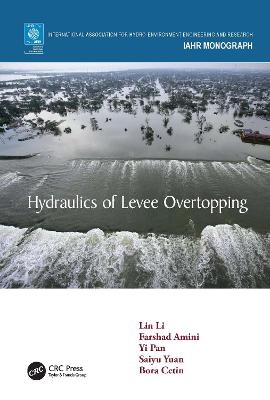
Hydraulics of Levee Overtopping
Seiten
2020
CRC Press (Verlag)
978-0-367-27727-7 (ISBN)
CRC Press (Verlag)
978-0-367-27727-7 (ISBN)
Wave overtopping on levees is one of the important issues in coastal engineering. This book provides a summary of new understandings on overtopping hydraulics under negative free board.
Earthen levees are extensively used to protect the population and infrastructure from periodic floods and high water due to storm surges. The causes of failure of levees include overtopping, surface erosion, internal erosion, and slope instability. Overtopping may occur during periods of flooding due to insufficient freeboard. The most problematic situation involves the levee being overtopped by both surge and waves when the surge level exceeds the levee crest elevation with accompanying wave overtopping. Overtopping of levees produces fast-flowing, turbulent water velocities on the landward-side slope that can potentially damage the protective grass covering and expose the underlying soil to erosion. If overtopping continues long enough, the erosion may eventually result in loss of levee crest elevation and possibly breaching of the protective structure. Hence, protecting levees from erosion by surge overflow and wave overtopping is necessary to assure a viable and safe levee system.
This book presents a cutting-edge approach to understanding overtopping hydraulics under negative free board of earthen levees, and to the study of levee reinforcing methods. Combining soil erosion test, full-scale laboratory overtopping hydraulics test, and numerical modeling for the turbulent overtopping hydraulics. It provides an analysis that integrates the mechanical and hydraulic processes governing levee overtopping occurrences and engineering approaches to reinforce overtopped levees. Topics covered: surge overflow, wave overtopping and their combination, full-scale hydraulic tests, erosion tests, overtopping hydraulics, overtopping discharge, and turbulent analysis.
This is an invaluable resource for graduate students and researchers working on levee design, water resource engineering, hydraulic engineering, and coastal engineering, and for professionals in the field of civil and environmental engineering, and natural hazard analysis.
Earthen levees are extensively used to protect the population and infrastructure from periodic floods and high water due to storm surges. The causes of failure of levees include overtopping, surface erosion, internal erosion, and slope instability. Overtopping may occur during periods of flooding due to insufficient freeboard. The most problematic situation involves the levee being overtopped by both surge and waves when the surge level exceeds the levee crest elevation with accompanying wave overtopping. Overtopping of levees produces fast-flowing, turbulent water velocities on the landward-side slope that can potentially damage the protective grass covering and expose the underlying soil to erosion. If overtopping continues long enough, the erosion may eventually result in loss of levee crest elevation and possibly breaching of the protective structure. Hence, protecting levees from erosion by surge overflow and wave overtopping is necessary to assure a viable and safe levee system.
This book presents a cutting-edge approach to understanding overtopping hydraulics under negative free board of earthen levees, and to the study of levee reinforcing methods. Combining soil erosion test, full-scale laboratory overtopping hydraulics test, and numerical modeling for the turbulent overtopping hydraulics. It provides an analysis that integrates the mechanical and hydraulic processes governing levee overtopping occurrences and engineering approaches to reinforce overtopped levees. Topics covered: surge overflow, wave overtopping and their combination, full-scale hydraulic tests, erosion tests, overtopping hydraulics, overtopping discharge, and turbulent analysis.
This is an invaluable resource for graduate students and researchers working on levee design, water resource engineering, hydraulic engineering, and coastal engineering, and for professionals in the field of civil and environmental engineering, and natural hazard analysis.
Lin Li, Farshad Amini, Yi Pan, Saiyu Yuan, Bora Cetin
Introduction, Surge overflow, Wave overtopping and combination, Three strengthening systems, Full-scale physical model testing of levee overtopping, Testing of erosion function apparatus, Hydraulic parameters of combined wave and surge overtopping, Turbulent analysis, Hydraulic erosion on landward-side slope of levees and conceptual model of soil loss from levee surface, Numerical study of combined wave overtopping and storm surge overflow of strengthened levee, Numerical study of turbulence overtopping and erosion.
| Erscheinungsdatum | 05.10.2020 |
|---|---|
| Reihe/Serie | IAHR Monographs |
| Zusatzinfo | 35 Tables, black and white; 70 Illustrations, black and white |
| Verlagsort | London |
| Sprache | englisch |
| Maße | 174 x 246 mm |
| Gewicht | 1280 g |
| Themenwelt | Technik ► Bauwesen |
| Technik ► Maschinenbau | |
| Technik ► Umwelttechnik / Biotechnologie | |
| ISBN-10 | 0-367-27727-1 / 0367277271 |
| ISBN-13 | 978-0-367-27727-7 / 9780367277277 |
| Zustand | Neuware |
| Informationen gemäß Produktsicherheitsverordnung (GPSR) | |
| Haben Sie eine Frage zum Produkt? |
Mehr entdecken
aus dem Bereich
aus dem Bereich
Buch | Softcover (2024)
Springer Vieweg (Verlag)
18,99 €
Grundlagen und Vorgehensweisen
Buch | Softcover (2021)
Springer Fachmedien Wiesbaden GmbH (Verlag)
37,99 €
Kommentar zu VOB/C ATV DIN 18340, ATV DIN 18299
Buch | Softcover (2024)
DIN Media (Verlag)
69,00 €


